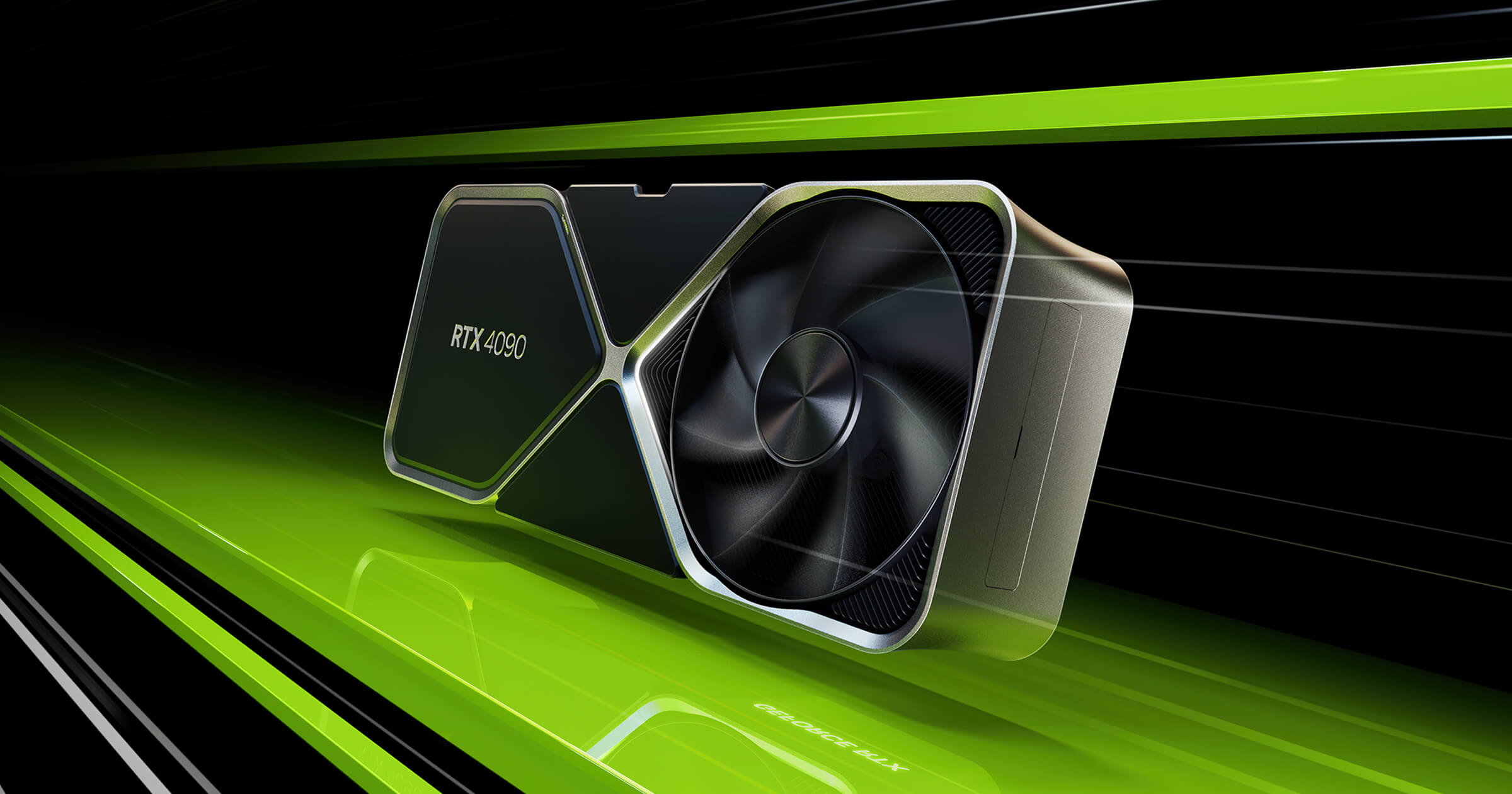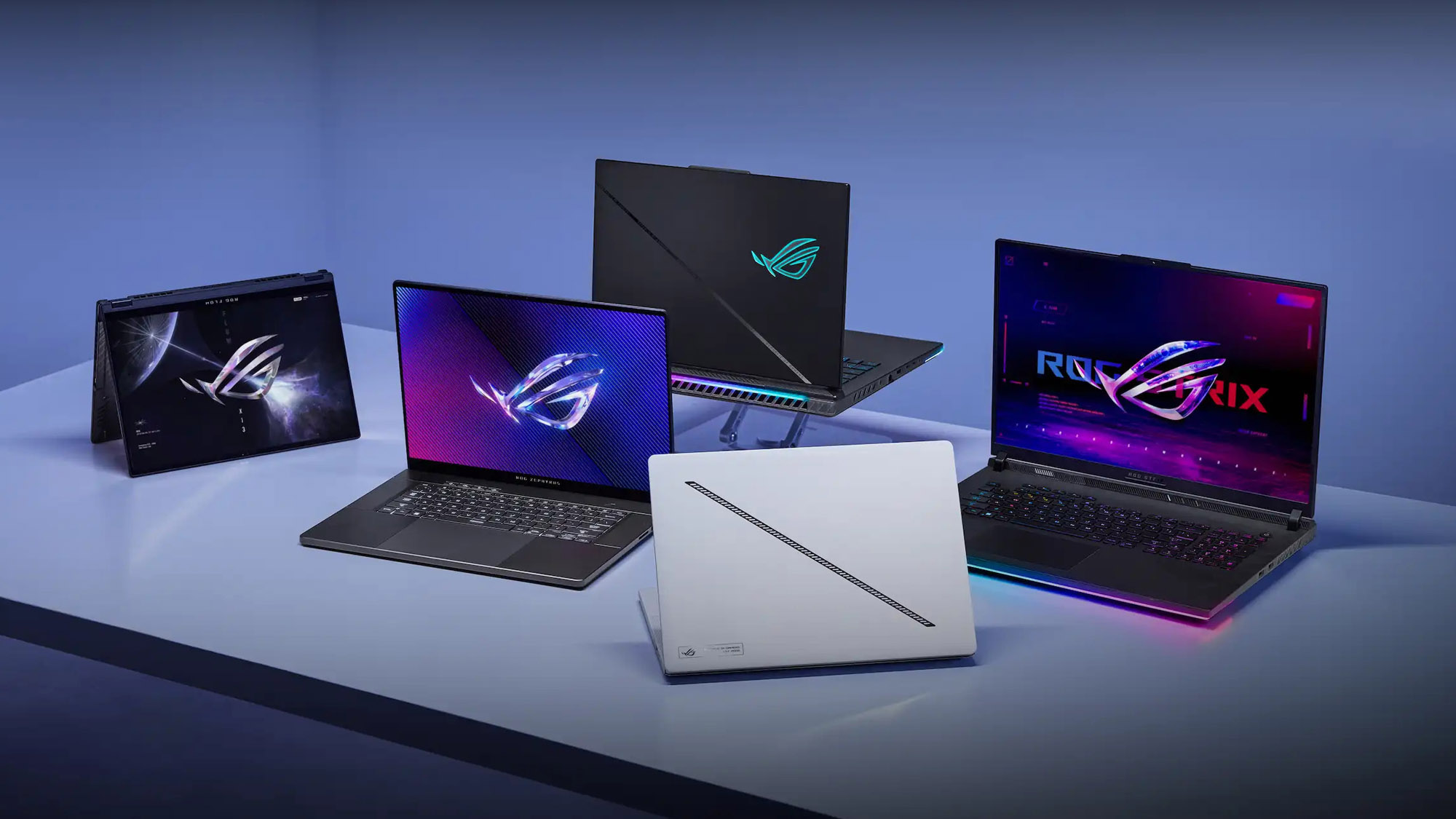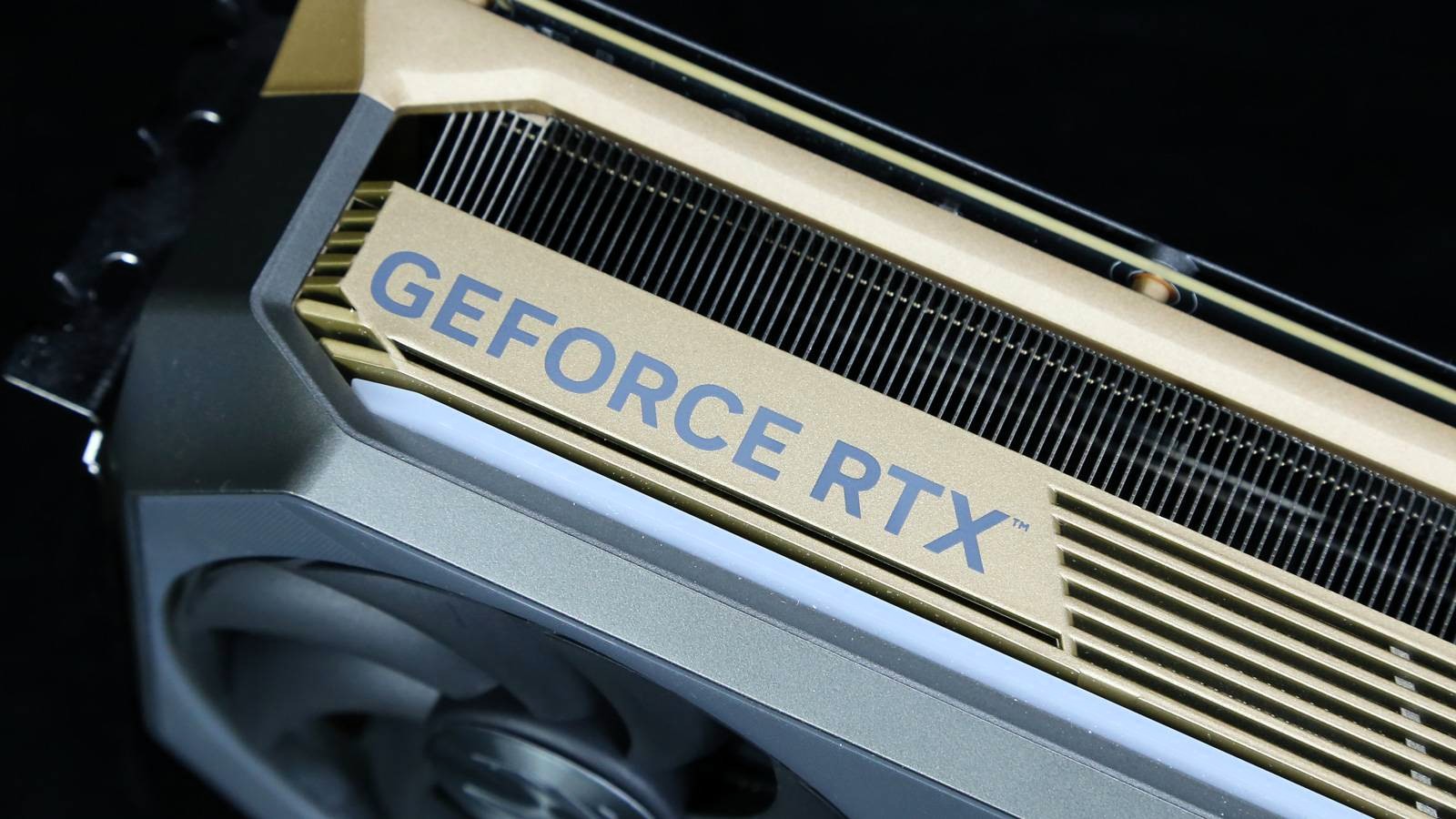Since its release, the Nvidia RTX 4090 has gained much attention. Its enormous size, tremendous power, and the extensive power required to utilize it. Additionally, Nvidia’s usage of a unique power connection on the GPU has been discussed again. Nvidia has opted for a connection that we anticipate will become more widespread soon. With the advent of the new PSU For Nvidia Geforce RTX 4090, the ATX 3.0 power supply standard, a single cable will be required to connect the PSU and the graphics card, as with most modern PCs.
Nonetheless, for the time being, most of us will be using the RTX 4090s included adapter. The good news is that you probably must not need to buy a new ATX 3.0 power supply. On the internet, there is a lot of misleading information that has lately gained a lot of attraction. There is an assumption that you require an ATX 3.0 power supply to utilize an Nvidia RTX 4090 graphics card. This information is false, to put it simply. Moreover, Some sites advise gamers against using PCIe 8-pin to 12VHPWR adapters.
The RTX 4090’s high power consumption has been widely anticipated for months. The card features a 450W TDP in Nvidia’s own Founders Model edition, and Nvidia recommends a 1000W power supply to power it appropriately. The ATX 3.0 power standard was not considered while Nvidia was developing its RTX 40 series. In a nutshell, Intel created ATX 3.0 as a current power standard. It’s essential to keep in mind the one component that will power your fancy hardware while thinking about high-quality hardware.
Making a poor choice might lead to hardware problems, resets, and inefficient energy consumption. The 4090 has the same power consumption as the RTX 3090 Ti, at 450 watts. When used with compatible board manufacturers, the RTX 4090 may demand much more power than its 450W maximum TDP. If an RTX 4090 is something you’re interested in, we’re here to help you know what kind of power supply you should be looking for.
Key Takeaways
- Buying a new ATX 3.0 PSU is optional to use an Nvidia Geforce RTX 4090. Every graphics card in the RTX 40 series will feature an 8-pin to 12VHWPR converter, including those with the more common 16-pin connections.
- Graphics cards in RTX 4000 series are notorious for their high power consumption. The 40-series GPUs have more extensive power needs than previous generations but aren’t extraordinary.
- If your current power supply doesn’t have enough power to run the RTX 4090, you will need to replace it. RTX features a 450W TDP in Nvidia’s own Founders Model edition, and Nvidia recommends a 1000W power supply to power it appropriately.
- Nvidia’s newest graphics cards are unaffected by “power excursions,” since the RTX 4090 is built to have far less of them than the RTX 30 series, it succeeds. If your current power supply has sufficient wattage, you won’t need to upgrade.
- This RTX 4080 has a 12-pin 12VHPWR power connection. It’s compatible with the new PCIe 5.0 high power standard and will soon be standard on ATX 3.0 power supplies, allowing 600W of power to be sent over a single cable. For the time being, Nvidia has informed its customers that the existing power supply units are sufficient for their needs.
Power Requirements For the RTX 4090
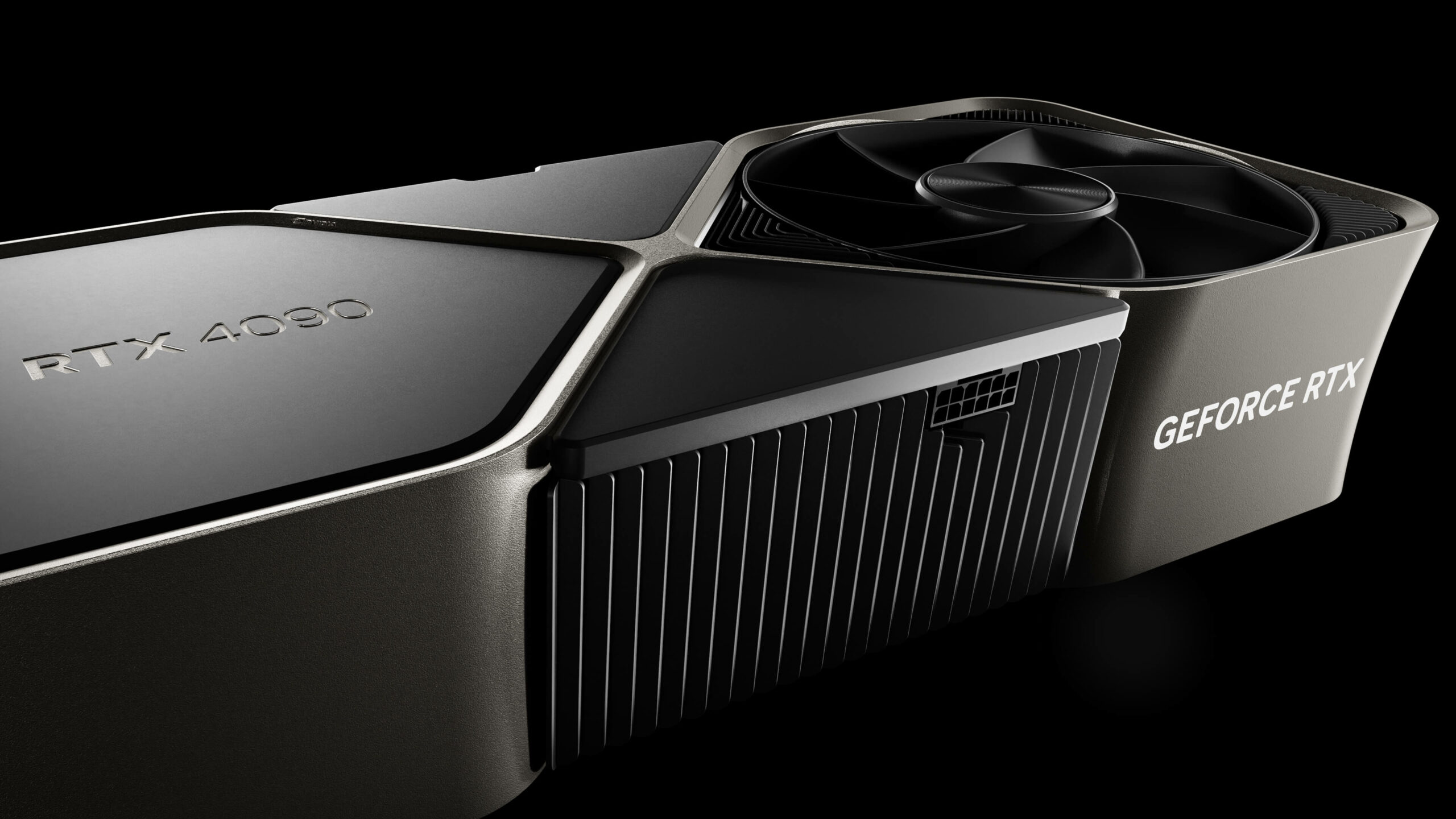
One of the great pleasures a PC fan or gamer can experience is the arrival of a brand new GPU, mainly if that GPU is indeed an RTX 4090. However, Nvidia’s latest graphics card has several prerequisites and requirements, the most important of which is a power supply that could deal with its increased TDP.
Graphics cards in RTX 4000 series are notorious for their high power consumption. The 40-series GPUs have more extensive power needs than previous generations but aren’t extraordinary. The RTX 3090 requires 350 watts, while the 4090 draws 450 watts, equivalent to the 3090 Ti. Therefore, If you want Nvidia’s latest flagship, you’ll need a robust new PSU for Nvidia Geforce RTX 4090.
If your current power supply doesn’t have enough power to run the RTX 4090, you will need to replace it. Nvidia’s Founders Edition has a 450W TDP. The company suggests using an 1000W PSU to get the most out of your PC. However, because you’re probably going to combine it with additional high-end hardware, you should aim for 1000W+ to be safe.
However, the included adapter will let you use the RTX 4090 with almost any power supply today. Connect the adapter to the RTX 4090, then connect the adapter to your power source using four PCIe 8-pin (6+2) power cables. Although unpleasant, it is now essential. At least you won’t have to invest in a power supply, which is scarce during the RTX 4090’s initial release.
Some manufacturers that plan to provide cables for use with their current power supplies may eliminate the necessity for this adapter. Some companies, like Corsair, have already announced their intentions to do so. See whether your power supply manufacturer is taking the same approach; it may be the best option in the long term. That’s for sure a cleaner option.
What Does Nvidia Recommend?
By using significant amounts of power during these short overflow periods, products with extensive power excursions break the principles of traditional power supply. Even though ATX 3.0 is meant to safeguard future PSUs from worrying about these transient spikes, Nvidia knows that reducing them is the best way to prevent possible issues.
Nvidia’s newest graphics cards are unaffected by “power excursions,” since the RTX 4090 is built to have far less of them than the RTX 30 series, it succeeds. If your current power supply has sufficient wattage, you won’t need to upgrade. Given that many affordable options from the past may still be accessed without sacrificing quality. If you want to increase case ventilation, Nvidia suggests utilizing the PCIe 5.0 power connection, 12VHPWR.
For the time being, Nvidia has informed its customers that the existing power supply units are sufficient for their needs. According to Nvidia, the smart power adapter could count the number of inserted 8-pin connections. If four of these connections are used rather than three, the RTX 4090 will be able to draw more power, allowing for more overclocking potential. Additionally, Nvidia has not found any compatibility concerns with the 8-pin and PCIe Gen 5 16-pin adapters.
Even though PCIe 5.0 connections are certified to withstand 30 cycles, some enthusiasts are worried about their endurance. Even though it does seem like much, Nvidia counters that it needs no worry, and we have to take their word like we always have been for at least the previous two decades.
Nvidia has successfully quieted the power usage debate. While Nvidia did raise power requirements, the rise was less than expected. If your power supply unit can handle the juice your future card requires, you should be good to go. But before you do that, remember that the RTX 4090 Ti can potentially be a power-consumption beast.
Both The New Power Supply And Connector
This RTX 4080 has a 12-pin 12VHPWR power connection. It’s compatible with the new PCIe 5.0 high power standard and will soon be standard on ATX 3.0 power supplies, allowing 600W of power to be sent over a single cable. Most of them are short in supply, and you can’t buy them now as per your demand. Some companies have already shown their first ATX 3.0 power supplies, but you won’t be able to get your hands on any of them very soon.
Although this will be the standard in the future, we’ll use 12VHPWR to pair up graphics cards directly. We’re still in that transition phase for the time being. So long as your power supply is sufficient enough, you’ll be able to experience Nvidia’s newest and finest graphics cards without spending any extra money. To prepare for the future, you should get an ATX 3.0 new PSU for Nvidia Geforce RTX 4090 if possible.
Nvidia 12VHPWR And Connectivity Issues
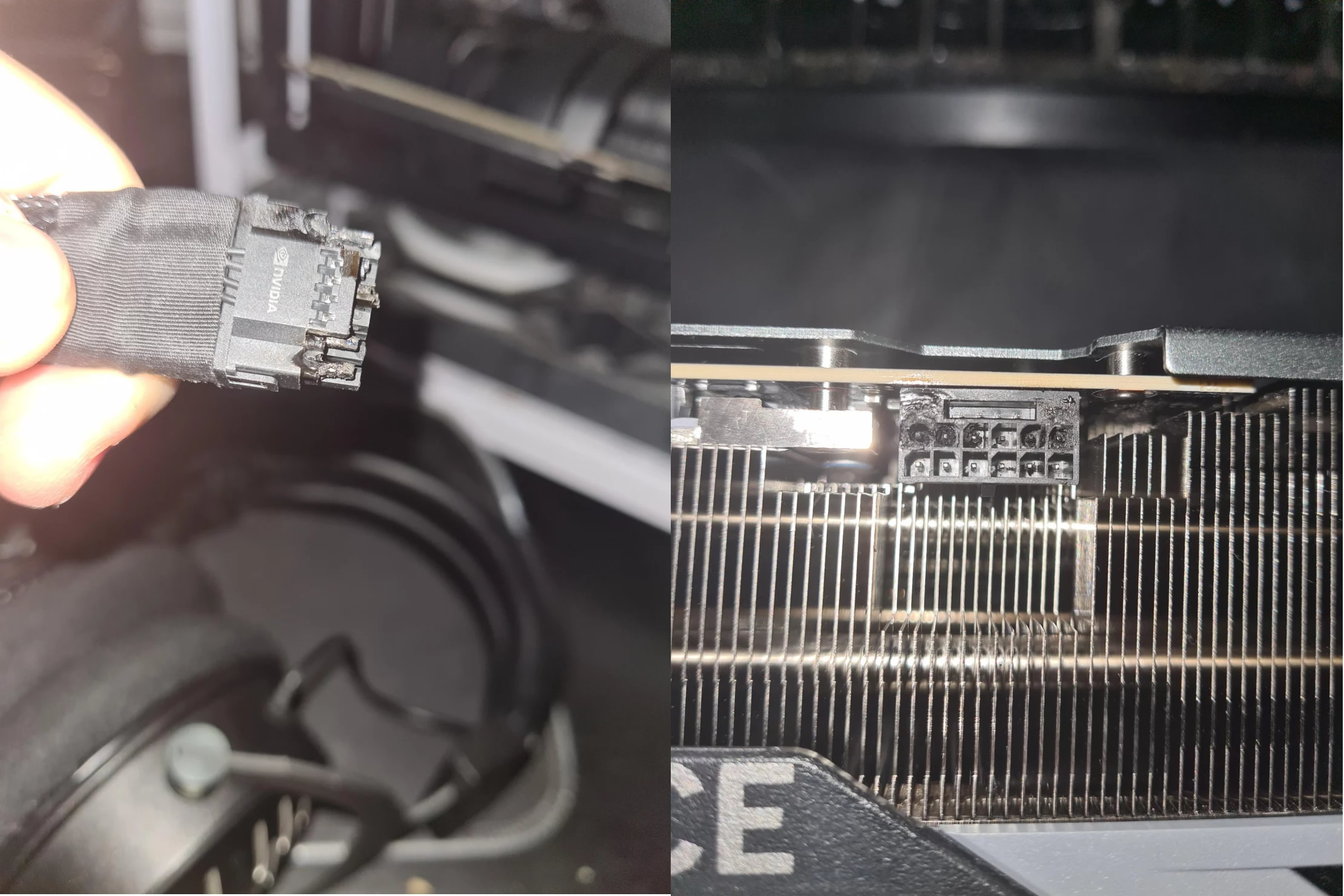
For $1,599, Nvidia offers The GeForce RTX 4090, a potent graphics card that consumes significant power due to its high performance. In addition, a Reddit user who purchased an Nvidia GeForce RTX 4090 has been complaining about issues with the card. However, the PC DIYer is being “burned” because the graphics card power connection melted, not because of a delivery switcheroo.
This was the first incident of a melted “quadropus” adapter, the conventional 4x 8-pin to 1x 16-pin Nvidia connector cable included with all 4090 cards. An RTX 4090 draws much power through a small place utilizing the 16-pin 12VHPWR power connection. The Reddit user claims he was playing Red Dead Redemption 2 with a GPU load of just 400W when the cable melted, ruling out excessive overclocking as the likely cause. Even if that’s the case, there are still many places where something may go wrong.
For good conductivity, all power connections must be firmly inserted and connected. Because of the potential for electric arcing or overheating, this is of paramount importance when working with components of greater power. The melted connections may have occurred because the cable was bent too close to the connector or because the adapter’s sockets were damaged or loose.
The pins in the top right and left seem to be the source of the damage. In comparison, the pins in the middle are less melted. Moreover, a faulty power supply can never be completely ruled out. What may have been sufficient for a less powerful GPU may have exceeded a crucial threshold when used with the RTX 4090.
RTX 4090 AIB’s Specifications
It’s no secret that the Nvidia GeForce RTX 4090 will need a robust PSU. In the footsteps of the RTX 3090 Ti, this new GPU is positioned to replace it as the most robust available option. Furthermore, the recommended PSUs for the different RTX 4090 variants from Nvidia’s add-in board partners vary greatly.
However, Nvidia recommends a relatively modest new PSU for Nvidia Geforce RTX 4090 of 850W. Several AIBs offers 1000W or even 1200W. To evaluate how far each company is willing to take the RTX 4090 and Nvidia Ada Lovelace architecture. We have included references to each of Nvidia’s partner cards below, focusing primarily on each AIB partner’s flagship card.
|
Graphic Cards |
Power Requirements |
|
Asus RTX 4090 ROG Strix OC |
1000W |
|
Inno3D RTX 4090 X3 OC iChill Black |
850W |
|
Galax RTX 4090 SG, ST |
850W |
|
Aorus RTX 4090 Master |
1000W |
|
PNY RTX 4090 Verto Epic-X |
850W |
| Palit RTX 4090 GameRock OC |
1200W |
| ASUS TUF Gaming GeForce RTX 4090 |
850W
|
| MSI RTX 4090 Suprim X, Suprim Liquid X |
850W |
|
Zotac RTX 4090 AMP Extreme, Trinity |
1000W |
| GeForce RTX 4090 GAMING 24G |
1000W |
For illustration, Asus advises a 1000W PSU for their ROG Strix model. Asus did warn that the user’s CPU and GPU overclocking might significantly increase power consumption. The final recommendation is 150W more than Nvidia’s standard Founders Edition. Moreover, the Gigabyte Aorus Master and the Zotac AMP Extreme/Trinity RTX 4090 also need a power supply unit of 1000W.
The top-end 4090 GPUs from MSI, PNY, Asus, Galax, and Inno3D all need a power supply with a reduced output of 850W to function appropriately. This is more realistic. However, we still advise against using anything less than an 80 Plus Gold power supply for a GPU of this caliber.
The RTX 4090 GameRock graphics card from Palit is the real show-stopper. However, it needs an enormous 1200W power supply. It’s the most demanding specification we’ve seen from a graphics card manufacturer thus far, albeit the original quad-SLI GTX 980 Ti could use more juice. That’s because there are four GPUs involved there instead of one.
Palit did not explain why it recommended a massive 1200W PSU, although there are likely other factors at play. A Core i9-12900K running at high clock speeds in a stress test can convince the system that a 1200W PSU is necessary. However, Palit’s cards have a TBP rating of just 450W.
Wattage Usage
Customers may feel overwhelmed by the overwhelming number of requirement levels of power. In the worst situation, using the incorrect PSU might make the whole system useless. Because of this, manufacturers of power supply units often advertise products with a high wattage, such as 1550W units. However, how much power do you really require?
The majority of the RTX 4090 models listed above are top-tier GPUs optimized to get the most out of the RTX 4090 GPU core while maintaining well within Nvidia’s stringent power and thermal requirements. The 4090’s boundaries will be pushed to their limits and beyond with the help of these customized cards. This is often achieved by increasing the power limit, using larger-than-necessary coolers, and improving the power delivery system.
Power consumption must increase as a consequence, given that the reference RTX 4090 card consumes 450W. This might suggest that future iterations frequently need 500W or more from the grid. To our relief, most of Nvidia’s AIB partners provide “regular” RTX 4090 SKUs that adhere to Nvidia’s standard power demands and only need a 1000W PSU. Although PSU wattage is an important consideration, it is not decisive.
Because not everyone has the same setup, you should take recommended wattages with a grain of salt. Others may use a Ryzen 7 5800X3D, which uses just under 100W of power when gaming. In contrast, others may have a Core i9-12900K pushed to 5.5GHz, which uses more than 300W of power at its maximum. The power consumption of a Core i9-10980XE with a complete RAID 10 configuration and ten hard drives might be quite high. No matter what the AIB partner says, each of these permutations yields a unique PSU power output.
Nvidia’s 1000W suggestion is likely based on the fact that a 450W card coupled with a high-end CPU and the rest of the system may easily exceed 750W under stress. Because not all 1000W PSUs are made equal, we recommend a 1000W+ or 1200W PSU to provide some wiggle space.
Sudden Power Spikes
Transients are brief surges of electricity that may damage graphics cards. Despite the fact that this has historically been the case, it has become more of a problem due to reasons such as increased power needs, boost algorithms, and faster energy management features. Designs built to the old ATX standard aren’t robust enough to run today’s GPUs.
Given the enormous power consumption of 350W, even a 2x increase would need a contemporary power source to provide 700W of power for a short period of time. Your computer will restart, crash, or have a blue screen if the graphics card isn’t given the power it requires at that precise moment. Don’t misunderstand. This isn’t going to be a regular event. It’s something that occurs only on rare occasions.
Most individuals aren’t bothered by having to restart their system every once in a while. However, professionals and passionate gamers alike can’t afford to do so. To solve this issue, ATX 3.0 mandates that contemporary PSUs can handle power surges of approximately 3x for such PCIe and 2x for the overall system. An ATX 3.0 certified power supply can handle a transient surge of up to 1350W from a 450W RTX 4090.
ATX 3.0 Power Supplies
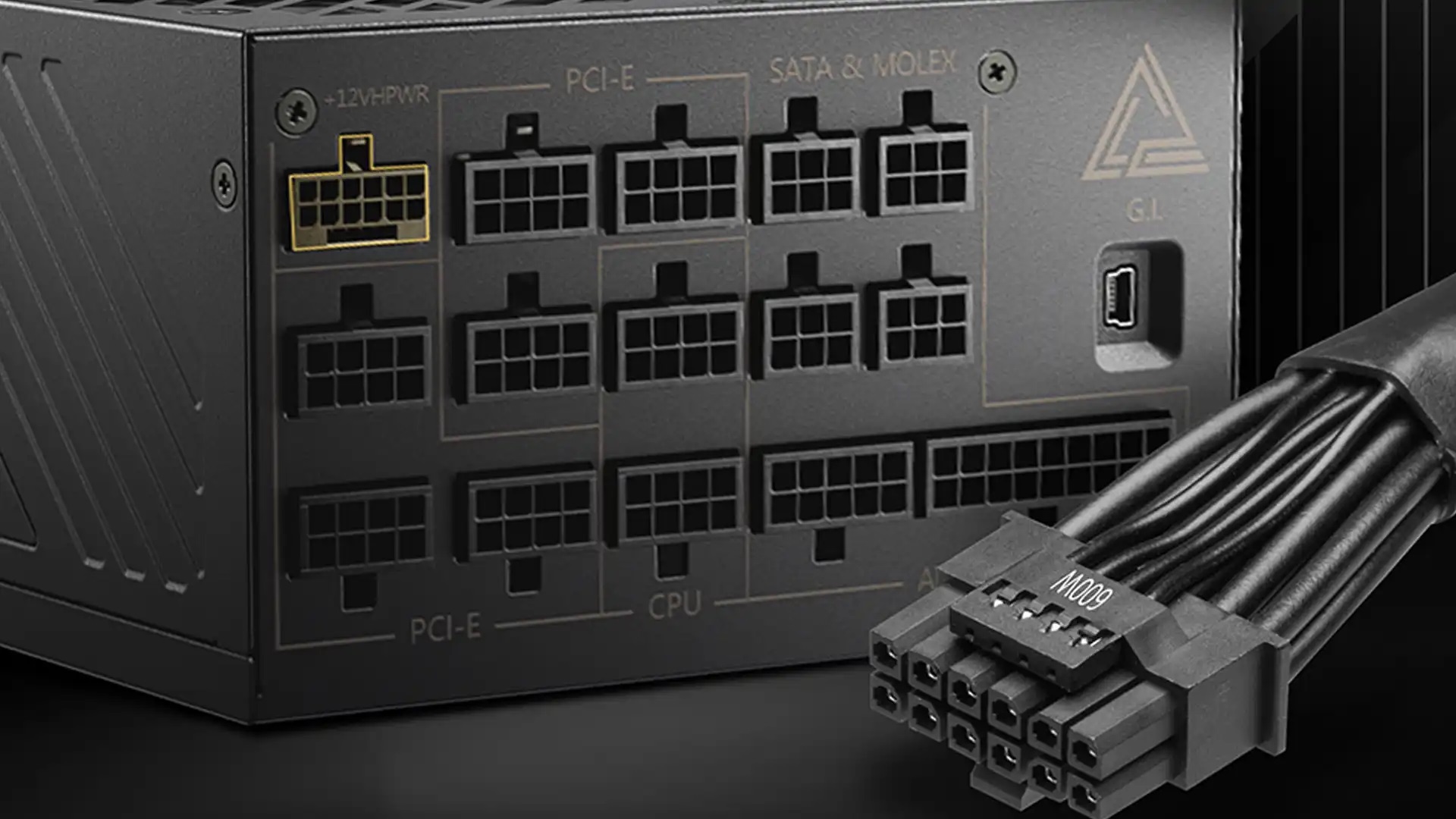
And if the above enhancements weren’t enough, there’s also the latest ATX 3.0 standard for power supplies. These modern power bricks are designed with the RTX 40-series and other next-gen GPUs in mind. New technological standards, such as those for dealing with very high transient spikes, should be implemented and be capable of handling the extremely powerful GPUs that are now available.
The word “demand” is rather powerful. In particular, powerful GPUs like the GeForce RTX 4090 may reap the rewards of various enhancements introduced by the new ATX 3.0 specifications. Although not everyone may need them, these enhancements make assembling your PC simpler and more reliable in general.
Many of the components you use daily adhere to the ATX standard, which Intel designed in 1995. It is regularly updated and altered so as to accommodate emerging tendencies. The most recent version, ATX 3.0, has several enhancements designed to facilitate the operation of cutting-edge gear like Nvidia’s RTX 40-series graphics cards.
It’s recommended that the 4090 cards come with the new 12VHWPR connection, which can provide up to 600W via a single cable, and that the dreadful four-tentacle octopus adapters be omitted altogether. In brief, a strong power supply is essential if you want to buy a new RTX 4090 card. Anyone who can afford a $1,600 GPU should also be able to afford a $200-$300 power supply. Any high-quality PSU with 850 watts or more output should work adequately.
Best PSUs For the RTX 4090
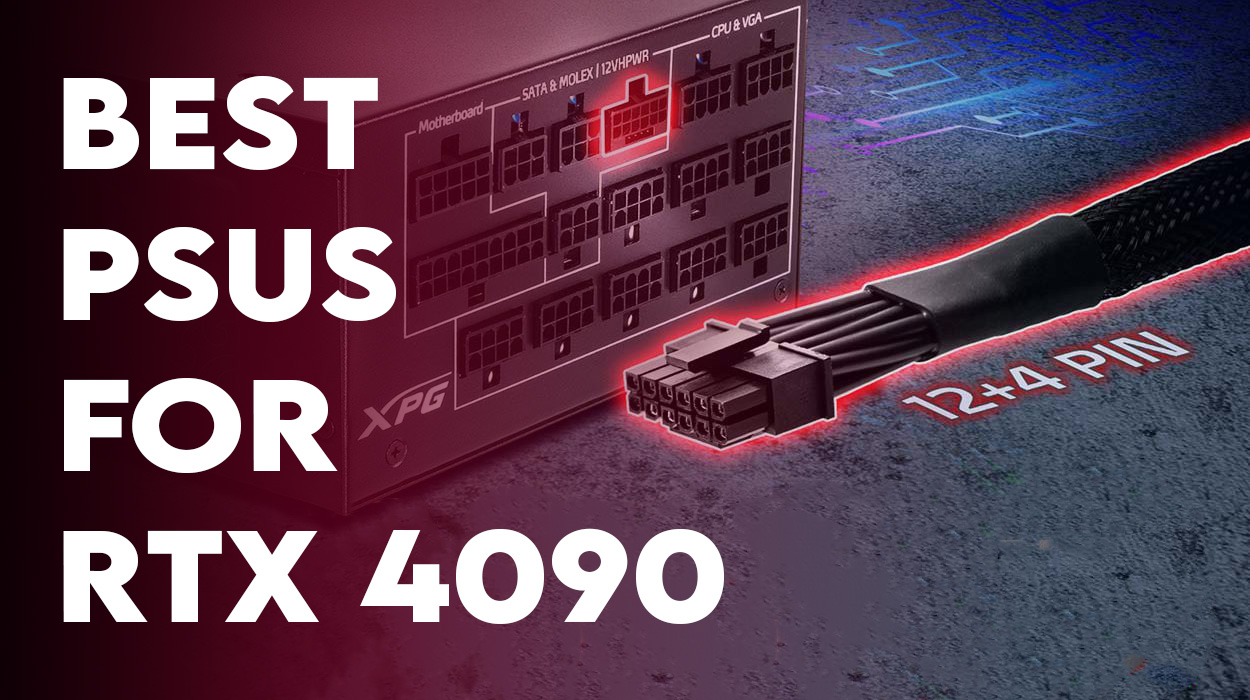
The new graphics card from Nvidia requires a power connection that can keep up with its increased TDP. The brand-new RTX 4000 series offers improved performance but at the expense of extensive energy consumption and power connections. In light of this massive need, we evaluate many potential power solutions for the RTX 4090. The new card features a 450W board power.
This means the Founder’s Edition of the card requires a power supply of at least 1000W to function properly. However, the recommended PSU for certain customized AIB cards may be more than the average. If you’ve decided to upgrade to an RTX 4090, you might need a new power supply unit PSU that can accommodate Nvidia’s latest hardware.
It’s more complex to find a more robust and resilient power unit that can keep up with the high demands of the RTX 4090. But we’ve found some of the finest power supplies to support that blazing 4090. Let’s look at power supplies in detail and see which are compatible with your new RTX 4090. In addition to considering power usage, cable management, ventilation, noise, and cost, we settled on these PSUs for the RTX 4090.
Additionally, the power connection has evolved to accommodate the new ATX 3.0 PSU standard. Even if it’s unnecessary, you will have additional options to explore. In addition to these changes, ATX 3.0 introduces a slew of new power specifications, including higher efficiency and durability ratings and a significantly higher endurance for power spikes. Given the RTX 4090’s higher power requirements, we’ve selected these PSUs.
MSI MPG A1000G PCIE 5
First, for the New PSU For Nvidia GeForce RTX 4090, we have MSI MPG A1000G PCIE 5. It is the most recent power supply unit from MSI and is ATX 3.0 and PCIe5.0 ready. In addition, it features the modern 16-pin 12VHPWR PCIe power connection seen in NVIDIA’s RTX 40 series of graphics cards. The MSI’s MPG A1000G PCIE5 is entirely modular. This reduces cable clutter and allows for simple cable replacement.
Seasonic Vertex 1200W
Second, for the New PSU For Nvidia GeForce RTX 4090, we have Seasonic Vertex 1200W. Seasonic has released its newest VERTEX power supplies, fully compliant with the current industry standards for PC hardware, such as ATX 3.0 and PCIe 5.0.
It comes with variants of Platinum and Gold efficiency levels and outputs of 1200W, 1000W, 850W, and 750W. With the new 16-pin “12VHPWR” power line that NVIDIA’s upcoming Ada Lovelace graphics cards will use, Seasonic has become modular for its VERTEX series PSUs.
In addition to the massive ten-year warranty, other features include a 135mm Fluid Dynamic Bearing fan for silent operation. Seasonic provides Hybrid Silent Fan Control for optimum cooling and full protection features, including OPP, OVP, UVP, SCP, OCP, and OTP.
Thermaltake Toughpower GF3 1200W
Fourth, for the New PSU For Nvidia GeForce RTX 4090, we have Corsair Thermaltake Toughpower GF3 1200W. The whole GF3 series from Thermaltake is compliant with the newest ATX standard and uses 12VHPWR connections. The GF3 1200W, built on the CWT architecture, is the most powerful product in its series. Despite its Cybenetics Gold and 80 PLUS Gold ratings, the GF3 1200W is not a quiet PSU due to its Cybenetics Standard noise rating.
Driven by a fluid dynamic bearing fan with a very aggressive speed profile, the PSU has a 12+4 pin PCIe connection and can provide up to 600W, So Nvidia special adapters aren’t necessary to power NVIDIA’s RTX 4000 series graphics cards. The PSU team at Thermaltake collaborates with other companies like CWT to ensure that their products are reliable and powerful. ToughPower GF3 1200 is built on a reliable CSZ platform and utilizes only high-grade components.
SilverStone Technology HELA 850R
Lastly, for the New PSU For Nvidia GeForce RTX 4090, we have SilverStone Technology HELA 850R. For compatibility with the RTX 30-series Founders Edition GPUs, Silverstone introduced the HELA series in late 2021. This 850W PSU has a 12+4 pin ATX12HPWR connection and is compatible with ATX 3.0 requirements. As a prerequisite to providing the ATX12HPWR connection, the PSU can withstand +100% excursions for 100 µs.
Inside, you’ll find a 135 mm fluid dynamic bearing fan, Cybenetics Platinum efficiency, and a single +12 V rail layout. There are also many SATA-power plus Molex connections, in addition to six 6+2 pin PCIe and two 8-pin EPS. This PSU is up to the task with an ATX form factor, all-Japanese electrolytic capacitors, highly bendable black flat wires, and a constant 24/7 power supply at 50C.
ASUS ROG Thor 1000W Platinum II
The 1000W of power is more than enough for even the most demanding gamers, and the 80 Plus Platinum certification ensures that it will be efficient in its use of power and will provide your components with a clean, steady current with no disruption. The Thor’s 80 Plus Platinum Certification results from its use of quality components, including 100% Japanese capacitors.
The ASUS ROG Thor 1000W Platinum II is a high-quality power supply that should be more than enough for even the most powerful gaming PC systems, thanks to its completely modular design and many cable connectors. The new 12VHPWR connection on the Thor means you can power your 4090 without using it with an octopus connector.
The Thor has ROG Thermal Solution, which helps to maintain a cool operating temperature. ASUS has developed a unique cooling method that uses the power supply’s casing as a heatsink in conjunction with a 135mm fan.
Final Thoughts
The question of whether or not you need a new PSU for your Nvidia GeForce RTX 4090 should now be cleared. If you’re still unsure, we have some advice for you. Let’s say you’re considering replacing your current RTX 3090 Ti with an RTX 4090. Despite the high power requirements of your new card, we believe your current PSU is enough. However, your performance would suffer if you weren’t rocking a 3090 Ti.
For comparison purposes, consider the other GPUs in the RTX 30 series; you presumably met the power requirements. It’s unsafe to utilize an older system’s power supply to run the latest GPU, like the RTX 4090, so you’ll need to acquire a new PSU. We think that if you can afford an 1800 to 2000 dollar card. Spending a few bucks for a new ATX 3.0 PSU won’t put you in any harm.
Further, with modern technology comes a plethora of additional functions. The new ATX 3.0 power supplies are excellent and well worth the cost. As we mentioned above, all the latest possible PSUs you can get your hands on are worth it for those users who are sticking with the older PSUs. As more powerful GPUs become available, you will eventually need to replace your PSU.
A new PSU will be necessary at some point in the future since your current one will ultimately become obsolete. The new cards are causing quite a stir in the market, so it’s best to have enough money to get a modern, recommended power supply. As usual, everything comes from our side. We’ll see you at the next one.
Do You Need A New PSU For Nvidia GeForce RTX 4090? - FAQs
For the Founder’s Edition 4090 from Nvidia, as well as many other versions with the same GPU clock speed, a 1000-watt power supply, is recommended.
The 4090 has the same power consumption as the RTX 3090 Ti, at 450 watts. When used with compatible board manufacturers, the RTX 4090 may demand much more power than its 450W maximum TDP.
Nvidia’s Founders Edition has a 450W TDP. The company suggests using a 1000W PSU to get the most out of your PC. However, because you’re probably going to combine it with additional high-end hardware, you should aim for 1000W+ to be safe.
In addition to considering power usage, cable management, ventilation, noise, and cost, we settled on these PSUs for the RTX 4090. MSI MPG A1000G PCIE 5, Seasonic Vertex 1200W, Thermaltake Toughpower GF3 1200W, SilverStone Technology HELA 850R, and ASUS ROG Thor 1000W Platinum II
Thank you! Please share your positive feedback. 🔋
How could we improve this post? Please Help us. 😔
[Wiki Editor]
Ali Rashid Khan is an avid gamer, hardware enthusiast, photographer, and devoted litterateur with a period of experience spanning more than 14 years. Sporting a specialization with regards to the latest tech in flagship phones, gaming laptops, and top-of-the-line PCs, Ali is known for consistently presenting the most detailed objective perspective on all types of gaming products, ranging from the Best Motherboards, CPU Coolers, RAM kits, GPUs, and PSUs amongst numerous other peripherals. When he’s not busy writing, you’ll find Ali meddling with mechanical keyboards, indulging in vehicular racing, or professionally competing worldwide with fellow mind-sport athletes in Scrabble at an international level. Currently speaking, Ali has completed his A-Level GCEs with plans to go into either Allopathic Medicine or Business Studies, or who knows, perhaps a full-time dedicated technological journalist.
Get In Touch: alirashid@tech4gamers.com


